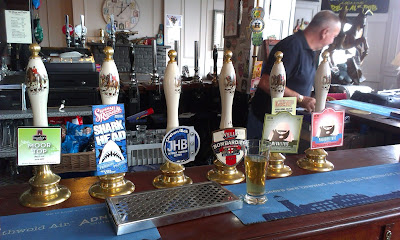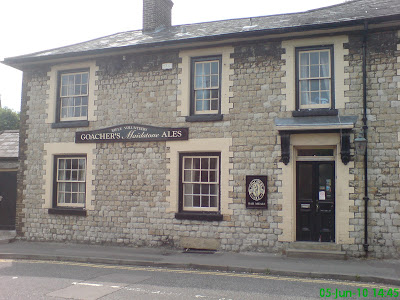Whilst in Lewes the other week I picked up a copy of "Sussex Drinker"; the quarterly news-magazine published by the combined Sussex CAMRA branches.
Seeing as my son and I were in the company of friends from Maidstone & Mid
Kent CAMRA, I also picked up the latest edition of “Draught Copy”; their own
magazine, which also appears on a quarterly basis.
I hadn’t really looked at these magazines until the other
night, when flicking through them I was amazed, and also somewhat taken aback,
by the numbers of breweries there are in the two counties. Kent
currently has 39 operating breweries whilst Sussex
can boast a staggering 60!
Now I know other writers, such as Curmudgeon and Boak &
Bailey have written about this before, but the number of breweries in this
south-eastern corner of England
is surely way too high, and in the long term, unsustainable.
With beer sales in decline, fewer people going to the pub
and indeed pubs continuing to close at an alarming rate, where exactly is the
market for all these beers or, more importantly, where are they managing to
sell their beers?
Of course some of these 99 breweries are brew-pubs, or one
man bands. Others specialise in bottles and concentrate on selling their beers
into farm shops or at farmers’ markets, but this must be a pretty precarious
way to earn a living. On the other hand, there are also quite a few success
stories amongst this number,
But where will it all end? It was rather sad to read in
“Sussex Drinker”, of the demise of
Ballard’s Brewery; one of the pioneers of the small brewery movement, a phenomenon which
actually predates the much more recent micro-brewery explosion. Ballard’s started brewing in 1980, so were
not far short of their 40th anniversary.
However, just over two weeks ago it was announced that
Ballard’s would be closing, but their beers would continue being brewed by the
Greyhound Brewery in West Chiltington, which is just down the road from
Ballard’s home at Nyewood, West Sussex. Francis Weston, Ballard’s brewer for
many years, will oversee the transfer of the recipes to their new home, whilst
the brewing plant has been sold and is being shipped out to Serbia,
of all places.
“Sussex Drinker” also reported on the closure of the Beachy
Head Brewery, due to the imminent retirement of its founder and brewer, Roger
Green. Then of course there is news of
start-ups, such as Brewing Brothers in Hastings and Brew Studio at Sompting.
As others have pointed out, we must be close to saturation
point with regard to breweries; if we haven’t reached it already, and although
the choice of beers which are now available appears a good situation to be in,
the converse is actually true. These days when confronted in a pub, by an unfamiliar beer on the bar, I am likely to think twice before ordering a pint, whereas at one time I wouldn't have hesitated to give it a try.
Too much choice, actually means less in a perverse way, and
the fact that the beers brewed by some of these new breweries are mediocre at
best, actually helps no-one, as for a while at least, it ties up bar space
which could be taken by beers brewed by people who know their trade.
Ultimately, some of these poorer efforts will fall by the
wayside, but in some instances not before one or two of the better breweries
have been driven out of business by too much competition chasing far too few
outlets. This really is an example of competition actually stifling choice and not working in the consumer interest.
The pattern of what is happening in Kent and Sussex is being
repeated up and down the country, with most areas of Britain potentially
offering a range of beers which would have seemed unimaginable a decade or so
ago. But will this amazing choice ultimately "kill the goose that laid the
golden egg", or will we see the long predicted, but yet to materialise, shake up
in the brewing industry, and the cutting out of the slack?










































